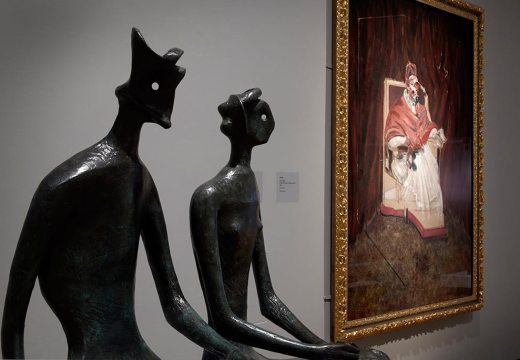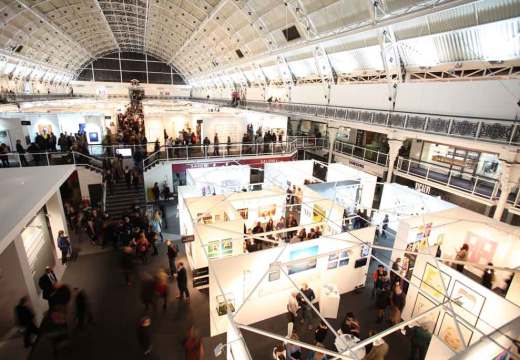Smaller museums and galleries often get overlooked in the national and international press. In a new series, Apollo asks museum directors and curators what makes their small wonders so unique. Liz Gilmore is the director of the Jerwood Gallery in Hastings.
Can you tell us a bit about the gallery’s history?
Jerwood Gallery opened in March 2012, the most recent addition to the network of South East coastal galleries. The gallery was the vision and commission of Alan Grieve, Chairman of the Jerwood Foundation, and was built to house the Jerwood Collection of 20th- and 21st-century British art, whilst also showcasing a contemporary curated programme.
What makes this gallery unique?
Its combination of art, architecture, location and operational model. The physical location of the gallery, flanking a working fishing beach – the largest beach-launched fleet in Europe – is unique. Jerwood Gallery is one of the greenest public galleries in the country. Rainwater flushes the loos and ground-source heat probes, which bore 120 meters into the ground, heat and cool the gallery. I love its ‘grand domestic’ feel – human in scale, sensitive in design. We’re thrilled to have the endorsement of three architectural awards, including a RIBA National award. In 2013 we reached the mid-list of the prestigious Stirling Prize.
Crucially, we function without any public subsidy to support the core operations. We exist through revenue from entrance fees, retail, cafe profit share, plus the generous subsidy from the Jerwood Foundation and the activities of our friends and benefactors.
How does it relate to the local area?
Many of the artists in our collection have roots in Hastings and a number of our temporary exhibitions have strong regional associations. We have around 1000 members, two thirds of whom live in Hastings Borough and are vital to the lifeblood of the gallery. Next month, a weekly community choir will commence here. Many local groups such as the Hastings Fishermen Protection Society and Hastings Old Town Residents were instrumental to the inception of the gallery and continue to support us. In addition to our regular education and outreach programmes, we are fortunate to have three years of funding from the Prince’s Trust scheme, START, Children and the Arts. This brings a targeted group of 1500 children and young people from schools in Hastings & St Leonards, who otherwise may not have an opportunity to visit.
How did you come to work here?
I stood on the site of Jerwood Gallery eight years ago while on holiday in East Sussex and was struck by its integrity and raw beauty. At that time I worked at the National Gallery in London and the possibility seemed a world away, but it sowed a vital seed. In a subsequent role at the Arts Council (Head of Visual Arts) I became heavily involved in the development of the whole network of coastal galleries across the South East region. When the opportunity of Jerwood came up, I seized it.
What are the greatest challenges of running a small gallery?
Maintaining excellence and growing ambition. The team is small and all of them punch well above their weight. Flexibility and agility are fundamental traits. It’s intense but great fun.
What is your personal highlight from the collection?
Susannah and the Elders (1945–47) by Michael Ayrton (1921–1975). A stunning, diminutive, oil on panel work, roughly the size of an A4 piece of paper. It’s such a gem.
How well you do you feel you know the collection? Does it continue to surprise you?
With around 250 works in the collection it’s possible to develop quite an intimate relationship with them all. But like all old friends, they constantly surprise, delight and reveal more about themselves, the longer I spend in their company. We rotate what is on display throughout the year; roughly a third is on view at any one time.
How has the museum developed during your tenure?
The first year during the construction of the gallery was largely just me, working for the Jerwood Foundation to oversee the capital project and develop the operating plan. Now Jerwood Gallery operates independently, with a parallel charity. The core team of seven staff is supported by six part-time Front of House members and a growing bank of around 30 volunteers.
And what does the future hold for the Jerwood Gallery?
We re-open for 2014 on 1 February with a new-look café and increased retail area. Our next move artistically is to tour our curated exhibitions and launch a new Artists’ Platform.
Liz Gilmore is the director of the Jerwood Gallery in Hastings, East Sussex.
Unlimited access from just $16 every 3 months
Subscribe to get unlimited and exclusive access to the top art stories, interviews and exhibition reviews.














![Masterpiece [Re]discovery 2022. Photo: Ben Fisher Photography, courtesy of Masterpiece London](http://www.apollo-magazine.com/wp-content/uploads/2022/07/MPL2022_4263.jpg)
Why are fathers so absent from art history?